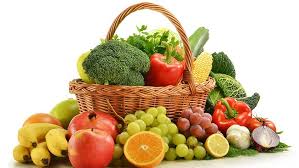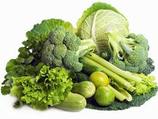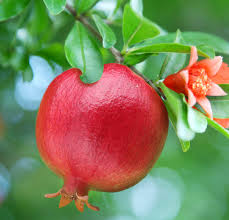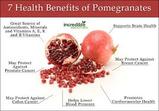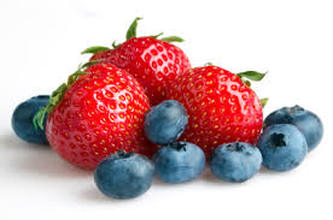SELECTIVE FOODS
GREENS, POMEGRANATE,
BERRIES
+
SUN + GREENS: FEED A WORM A CHLOROPHYLL METABOLITE ALONG WITH SUN EXPOSURE
"...There was an increase in the production of ATP upon being exposed to light, with a consequential increase in life span."
Xu C et al., 2014
"We further demonstrate the same potential to convert light into energy exists in mammals, as chlorophyll
metabolites accumulate in mice, rats and swine when fed a chlorophyll-rich diet."
Xu C et al., 2014.
"Wouldn't it be amazing to begin looking at the green wavelengths of color in the produce case as a source of
energy ......... ?
Sayer Ji, 2015
EAT GREENS! PLANTS AND WORMS CAN USE CHLOROPHYLL. HUMANS???
Here is what researchers propose....
Researchers in a novel study, Light-Harnessing Chlorophyll Pigments Enable Mammalian Mitochondria to Capture Photonic Energy and Produce ATP, "propose that through consumption of plant chlorophyll pigments, animals, too, are able to derive energy directly from sunlight."
It was always thought that just plants used the sun to make energy in the form of photosynthesis. But, in this study, the researchers showed that "mammalian mitochondria can also capture light and synthesize ATP when mixed with a light-capturing metabolite of chlorophyll." When the researchers fed the metabolite (of chlorophyll) to the worm, Caenorhabditis elegans, there was an increase in the production of ATP upon being exposed to light, with a consequential increase in life span.
(See study cited below.)
* An excerpt of Sayer Ji's comments on this study:
"The implications of this study are truly profound. ATP production is essential for the health of our body, from the level of the cell all the way up. When ATP production is compromised through suboptimal nutrition, environmental exposures, or non-adaptive stress, disease and accelerated aging are inevitable. Even when these adverse variables are not a factor, ATP production will naturally fall off as we age, leaving a role for nutritional interventions that can help to increase ATP synthesis without, for instance, increasing oxidative stress or causing exhaustion or imbalances elsewhere. .... If this cell and animal research holds true for humans, a chlorophyll-deficient diet, along with a deficiency of sunlight exposure, would lead to significantly lower ATP production. Given this possibility, wouldn't it be amazing to begin looking at the green wavelengths of color in the produce case as a source of energy for the powerhouses of the cell (mitochondria), as potential age-decelerating agents, or as a means to increase one's sense of energy and health by allowing you to capture the sun's energies directly within your body? I believe this is exactly what this research indicates and makes it all the more compelling to go out of your way to include deep green veggies and living, chlorophyll-rich foods in your diet on a daily basis, does it not?"
(See Sayer Ji, Groundbreaking Discovery: Animal Cells Powered by Sunlight/Chlorophyll, www.greenmedinfo.com, April 23, 2015.)
==========================
Here is the abstract for the light-harvesting chlorophyll pigments study:
"Sunlight is the most abundant energy source on this planet. However, the ability to convert sunlight into biological energy in the form of adenosine-5'-triphosphate (ATP) is thought to be limited to chlorophyll-containing chloroplasts in photosynthetic organisms. Here we show that mammalian mitochondria can also capture light and synthesize ATP when mixed with a light-capturing metabolite of chlorophyll. The same metabolite fed to the worm Caenorhabditis elegans leads to increase in ATP synthesis upon light exposure, along with an increase in life span. We further demonstrate the same potential to convert light into energy exists in mammals, as chlorophyll metabolites accumulate in mice, rats and swine when fed a chlorophyll-rich diet. Results suggest chlorophyll type molecules modulate mitochondrial ATP by catalyzing the reduction of coenzyme Q, a slow step in mitochondrial ATP synthesis. We propose that through consumption of plant chlorophyll pigments, animals, too, are able to derive energy directly from sunlight,"
(See Xu C et al., Light-Harvesting Chlorophyll Pigments Enable Mammailian Mitochondria to Capture Photonic Energy and produce ATP, J Cell Sci, 2014.)
Researchers in a novel study, Light-Harnessing Chlorophyll Pigments Enable Mammalian Mitochondria to Capture Photonic Energy and Produce ATP, "propose that through consumption of plant chlorophyll pigments, animals, too, are able to derive energy directly from sunlight."
It was always thought that just plants used the sun to make energy in the form of photosynthesis. But, in this study, the researchers showed that "mammalian mitochondria can also capture light and synthesize ATP when mixed with a light-capturing metabolite of chlorophyll." When the researchers fed the metabolite (of chlorophyll) to the worm, Caenorhabditis elegans, there was an increase in the production of ATP upon being exposed to light, with a consequential increase in life span.
(See study cited below.)
* An excerpt of Sayer Ji's comments on this study:
"The implications of this study are truly profound. ATP production is essential for the health of our body, from the level of the cell all the way up. When ATP production is compromised through suboptimal nutrition, environmental exposures, or non-adaptive stress, disease and accelerated aging are inevitable. Even when these adverse variables are not a factor, ATP production will naturally fall off as we age, leaving a role for nutritional interventions that can help to increase ATP synthesis without, for instance, increasing oxidative stress or causing exhaustion or imbalances elsewhere. .... If this cell and animal research holds true for humans, a chlorophyll-deficient diet, along with a deficiency of sunlight exposure, would lead to significantly lower ATP production. Given this possibility, wouldn't it be amazing to begin looking at the green wavelengths of color in the produce case as a source of energy for the powerhouses of the cell (mitochondria), as potential age-decelerating agents, or as a means to increase one's sense of energy and health by allowing you to capture the sun's energies directly within your body? I believe this is exactly what this research indicates and makes it all the more compelling to go out of your way to include deep green veggies and living, chlorophyll-rich foods in your diet on a daily basis, does it not?"
(See Sayer Ji, Groundbreaking Discovery: Animal Cells Powered by Sunlight/Chlorophyll, www.greenmedinfo.com, April 23, 2015.)
==========================
Here is the abstract for the light-harvesting chlorophyll pigments study:
"Sunlight is the most abundant energy source on this planet. However, the ability to convert sunlight into biological energy in the form of adenosine-5'-triphosphate (ATP) is thought to be limited to chlorophyll-containing chloroplasts in photosynthetic organisms. Here we show that mammalian mitochondria can also capture light and synthesize ATP when mixed with a light-capturing metabolite of chlorophyll. The same metabolite fed to the worm Caenorhabditis elegans leads to increase in ATP synthesis upon light exposure, along with an increase in life span. We further demonstrate the same potential to convert light into energy exists in mammals, as chlorophyll metabolites accumulate in mice, rats and swine when fed a chlorophyll-rich diet. Results suggest chlorophyll type molecules modulate mitochondrial ATP by catalyzing the reduction of coenzyme Q, a slow step in mitochondrial ATP synthesis. We propose that through consumption of plant chlorophyll pigments, animals, too, are able to derive energy directly from sunlight,"
(See Xu C et al., Light-Harvesting Chlorophyll Pigments Enable Mammailian Mitochondria to Capture Photonic Energy and produce ATP, J Cell Sci, 2014.)
+
SUN + GREENS - AN EFFECT ON ANTIOXIDANT, COQ10?
What effect do the sun and greens have on the antioxidant, Co Q10? Co Q10 is a part of the ATP (energy making) system. Maintains the CoQ10 "pool"!
"We propose that dietary chlorophyll or its metabolites, together with light exposure, regulate plasma redox status through maintaining the ubiquinol (Co Q10) pool."
Qu J et al., 2013.
"But now we suspect the combination of the two (sunlight and greens [chlorophyll] ) may actually help the body create and maintain its own internal stock of antioxidants."
Michael Greger, MD, 2015
What effect do the sun and greens have on the antioxidant, Co Q10? Co Q10 is a part of the ATP (energy making) system. Maintains the CoQ10 "pool"!
"We propose that dietary chlorophyll or its metabolites, together with light exposure, regulate plasma redox status through maintaining the ubiquinol (Co Q10) pool."
Qu J et al., 2013.
"But now we suspect the combination of the two (sunlight and greens [chlorophyll] ) may actually help the body create and maintain its own internal stock of antioxidants."
Michael Greger, MD, 2015
EATING GREENS (CHLOROPHYLL) + SUNLIGHT MAY REGENERATE CONTINUOUS CO Q10 - IMPORTANT ANTIOXIDANT!!
In the Qu J et al. 2013 study, the researchers found that chlorophyll metabolites (from eating greens), plus ambient light can help maintain the "ubiquinol (Co Q10) pool".
Here is what Michael Greger, MD, wrote about this study: "Light-activated chlorophyll in your body may help regenerate a critical molecule called Co Q10." Note that Co Q10, known as ubiquinol, is an antioxidant. "When ubiquinol extinguishes a free radical, it is oxidized to ubiquinone. To act as an antioxidant again, the body must regenerate ubiquinol from ubiquinone."
And, we know, importantly, that Co Q10 is a part of the electron transport chain integral to the production of energy, ATP.
"But now we suspect the combination of the two (sunlight and greens [chlorophyll] ) may actually help the body create and maintain its own internal stock of antioxidants."
For Michael Greger, MD's, book, See How Not to Die, Flatiron Books, 2015. ... For the Study, see Qu J et al., Dietary Chlorophyll Metabolites Catalyze the Photoreduction of Plasma Ubiquinone, Photochem Photobiol, 2013.)
In the Qu J et al. 2013 study, the researchers found that chlorophyll metabolites (from eating greens), plus ambient light can help maintain the "ubiquinol (Co Q10) pool".
Here is what Michael Greger, MD, wrote about this study: "Light-activated chlorophyll in your body may help regenerate a critical molecule called Co Q10." Note that Co Q10, known as ubiquinol, is an antioxidant. "When ubiquinol extinguishes a free radical, it is oxidized to ubiquinone. To act as an antioxidant again, the body must regenerate ubiquinol from ubiquinone."
And, we know, importantly, that Co Q10 is a part of the electron transport chain integral to the production of energy, ATP.
"But now we suspect the combination of the two (sunlight and greens [chlorophyll] ) may actually help the body create and maintain its own internal stock of antioxidants."
For Michael Greger, MD's, book, See How Not to Die, Flatiron Books, 2015. ... For the Study, see Qu J et al., Dietary Chlorophyll Metabolites Catalyze the Photoreduction of Plasma Ubiquinone, Photochem Photobiol, 2013.)
"Aren't these green wavelengths of color in the produce case are a 'source of energy' for the
powerhouses of the cells (mitochondria), as potential age-decelerating agents, or as a means to increase one's sense of energy and health by allowing you to capture the sun's energies directly within your body?"
Sayer Ji, 2015.
powerhouses of the cells (mitochondria), as potential age-decelerating agents, or as a means to increase one's sense of energy and health by allowing you to capture the sun's energies directly within your body?"
Sayer Ji, 2015.
FRUITS OR VEGGIES DECREASE ESTROGEN DNA ADDUCTS? NOT FRUITS. VEGGIES!
In a 2014 study, healthy women aged 40-45 years proved that five botanical groups help decrease estrogen DNA adducts. Normally, estrogen is converted into catechol equinones. But unless the catechol equones are inactivated, the estrogen can become oxidized into quinones that can react with DNA, which can lead to damaging depurinated adducts that have to be repaired. An elevated DNA estrogen DNA adduct ratio is a risk factor for getting breast cancer as well as seen in cases of breast cancer. In the past, the Cavalieri team has found that resveratrol can reduce the estrogen DNA adduct ratio. In this study, here are the helpful veggie groups that are inversely related to the estrogen DNA adducts' ratio: 1. Musaceae -- such as bananas and plantain 2. Umbellifarae - such as celery, dill, coriander, fennel, carrots 3. Compositae - such as lettuce, chicory, artichokes, sunflowers.4. Ericaceae - such as flowering plants, like blueberries. 5. Chenopodiaceae - such as chard and beets (See Reding et al, Associations Between Dietary Intake of Fruits and Vegetables in Relation to Urinary Estrogen DNA Adduct Ratio, Open Journal of Preventive Medicine, 2014. Editors' Note: We wish to thank Dr. Cavalieri for his correspondence with us and for his long dedication to breast cancer patients.)
POMEGRANATE!
"Each and every part of pomegranate provides health benefits, that is, a neutraceutical food."
(Sreeja Sreekumar et al, Pomegranate Fruit is a Rich Source of Biologically Active Compounds, Biomed Res Int, 2014.)
(Sreeja Sreekumar et al, Pomegranate Fruit is a Rich Source of Biologically Active Compounds, Biomed Res Int, 2014.)
POMEGRANATE'S ANTI-CANCER EFFECT
A FEW EXAMPLES
A FEW EXAMPLES
Fermented polyphenols (in pomegranate)decreased tumor lesions * 42% versus controls. Extra purified polyphenols and pomegranate seed oil - *87% tumor reduction.
Mehta et al., 2004
"Both ellagic acid and urolithin A contribute to the mechanism of anti-cancer action,...."
Vlachojannis C et al.,2015
" ...Hydoalcholic extract of pomegranate peel extract possess a high potency to inhibit proliferation of different tumors cells in a dose independent manner .."
Modaeinama S et al., 2015
Mehta et al., 2004
"Both ellagic acid and urolithin A contribute to the mechanism of anti-cancer action,...."
Vlachojannis C et al.,2015
" ...Hydoalcholic extract of pomegranate peel extract possess a high potency to inhibit proliferation of different tumors cells in a dose independent manner .."
Modaeinama S et al., 2015
ANTI-CANCER PROPERTIES OF POMEGRANATE
In pomegranate, "Of the polyphenols (act like antioxidants), the chemopreventive ellagitannins (e.g. punicalagin and punicalin) are metabolized during absorption. One of the metabolites, ellagic acid, is further metabolized by the colonic microflora to urolithin A. Both ellagic acid and urolithin A contribute to the mechanism of anti-cancer action, but urolithin was less effective in inhibiting cancer cell proliferation." (See Vlachojannis C et al., Efficacy and Safety of Pomegranate Products for Cancer, Evidence Based Complement Altern Med, 2015.)
|
POMEGRANATE PEEL EXTRACT Growth inhibition of breast cancer cells using the peel extract is comparable to the drug, Taxol. 83.7% in peel extract 95.1% in Taxol Modaeinima S et a;., 2015 |
STARTING WITH THE PEEL.... POMEGRANATE PEEL
|
Who thinks about pomegranate peel?
In their 2015 pomegranate study, Modaeinama S et al. discussed the virtues of pomegranate peel. "Pomegranate is made of a rich variety of flavonoids, which contain approximately 0.2% to 1.0% of the fruit. About 30% of all anthocyanidins found in pomegranate are restricted within the peel. Polyphenolic compounds, as well as flavonoids and tannins are abundant in the peels of wild-crafted compared to cultivated fruits. Various fractions have been extracted from the pomegranate peel and seeds using ethyl acetate, methanol and water. It is shown that extraction with methanol give a higher yield with greater antioxidant activity. The peel exhibited higher activity as compared to seeds, ascribed to its phenolic composition."
Employing human cancer cells, including breast cancer cells, in their experiment with pomegranate peel extract, there were different doses of the extract, including 0, 5, 20, 100, 250, 500, and 1000 ug/ml.
Results: "In breast cancer cells, the maximum growth inhibition of 83.7% was obtained at doses 5µg/ml, value comparable to that of 20 µg/ml Taxol which caused to 95.1% growth inhibition of breast adenocarcinoma cells. The lowest growth inhibition of 76.54% was obtained at dose 500µg/ml of pomegranate peel extract. The mean growth inhibition was 82.76%."
Conclusion: "Our results indicated that hydoalcholic extract of pomegranate peel extract possess a high potency to inhibit proliferation of different tumors cells in a dose independent manner which requires precise dose optimization. Moreover, the antiproliferative effects of pomegranate peel extract seems to be tumor type specific, as hormone dependent cancer cells showed a high responsiveness to antitumoral effects of this extracts." (See Modaeinama S et al., Anti-Tumoral Properties of Punica Granatum (Pomegranate) Peel Extract on Different Human Cancer Cells, Asian Pac J Cancer Prev, 2015.)
|
POMEGRANATE FRUIT EXTRACT Anti-estrogenic effect as it binds to estrogen receptors in the breast. But, unlike estradiol (estrogen) and Tamoxifen (a drug), the extract does not affect uterine weight. Also, no harmful effect on cardiovascular or skeletal systems. Needs to be investigated as SERM and for hormone replacement therapy! Sreekumar S et al., 2014. |
|
One of pomegranate's mechanisms of action: "Our earlier finding also demonstrated the role of proliferation in breast cancer by binding to estrogen receptor at the same time not affecting uterine weight unlike estradiol (a form of estrogen) or tamoxifen (a drug)." (See Ravindran and Sreeharshen, Punica granatum and its Therapeutic Implications on Breast Carcinogenesis: A Review, BioFactors, 2015.) And from the earlier study, And from the earlier referenced study, " "We had found the PME (methanolic extract of pomegranate) has an anti-estrogenic effect on the mammary gland, without compromising the beneficial effects of estrogen in the cardiovascular and skeletal system and had no estrogenicity in the uterus. PME could possibly be considered as an ideal SERM and further studies might demonstrate its suitability and possible application in estrogen dependent breast cancers with beneficial affects in other normal dependent tissues....Furthermore, it would be valuable to investigate the long-term effects of PME in the in vivo models of estrogen deprivation to demonstrate its suitability in HRT (hormone replacement therapy). To achieve this goal, a better understanding is needed regarding the action of SERM, receptor, and coregulators that contribute to distinct patterns of gene expression."
(See Sreekumar S et al., Pomegranate as a Rich Source of Biologically Active Compounds, Biomed Res Int, 2014.)
(See Sreekumar S et al., Pomegranate as a Rich Source of Biologically Active Compounds, Biomed Res Int, 2014.)
DOES POMEGRANATE HAVE AN IN VITRO ANTI-PROLIFERATIVE EFFECT ON BREAST CANCER CELLS?
The pomegranate fruit is "a rich source of ellagitannins", known for their anti-cancer and anti-atherosclerotic properties. In this study, a break down of ellagitannins, the elagitannin-derived compound, urolithin B was chosen for this study due to its aromatase activity. The study found that urolithin B "significantly inhibited testosterone-induced MCF-7 cell proliferation." Other compounds also exhibited some anti-proliferative activity, but to "lesser degree than urolithin B." The researchers concluded, "These studies suggest that ellagitannin-derived compounds have potential for the prevention of estrogen-responsive breast cancer."
(See Adams LS, Pomegranate Ellagitannin-Derived Compounds Exhibit Anti-Proliferative and Anti-Aromatase Activity in Breast Cancer Cells in Vitro, Cancer Prev Res, 2010.)
DOES POMEGRANATE REDUCE BREAST CANCER TUMORS?
A study investigated different pomegranate extracts in a mouse mammary gland culture. The fermented juice polyphenols decreased the number of lesions by 42% compared to the controls, while a more purified version of those polyphenols and pomegranate seed oil "each effected an 87% reduction. The results highlight enhanced breast cancer preventive both for the purified compound peak B and for pomegranate seed oil, both greater than previously reported for pomegranate fermented juice polyphenols."
(See Mehta et al., Breast Cancer Chemopreventive Properties of Pomegranate (Punica Granatusm) Furit Extracts in a Mouse Mammary Organ Cultur, Eur J Cancer Prev, 2004.)
|
POMEGRANATE AND BONES Pomegranate extract - bone preserving effects almost comparable to E2 (estradiol). Sjreeja S et al., 2012. |
|
"Our findings clearly indicated that the possible bone preserving effect of PME (pomegranate extract) is almost comparable to E2 (estradiol form of estrogen). (See Sjreeja S et al., Pomegranate extracts Demonstrate a Selective Estrogen Receptor Modulator Profile in Human Tumor Cell Lines and In Vivo Models of Estrogen Deprivation, 2012.)
In another study, ovariectomized mice were given either fresh pomegranate juice, pomegranate peel, or a mashed totum. No matter what part of the pomegranate, the pomegranate "up -regulated osteoblast activity and decreased the expression of osteoclast markers." The 2013 study concluded, "These results indicate that all pomegranate parts are effective in preventing the development of bone loss induced by ovariectomy in mice. Such an effect could be partially explained by an improved inflammatory and oxidative status."
(See Spilmont et al., Pomegranate and its Derivatives Can Improve Bone Health Through Decreased Inflammation and Oxidative Stress in an Animal Model of Postmenopausal Osteoporosis, Eur J Nutr, 2013.)
In another study, ovariectomized mice were given either fresh pomegranate juice, pomegranate peel, or a mashed totum. No matter what part of the pomegranate, the pomegranate "up -regulated osteoblast activity and decreased the expression of osteoclast markers." The 2013 study concluded, "These results indicate that all pomegranate parts are effective in preventing the development of bone loss induced by ovariectomy in mice. Such an effect could be partially explained by an improved inflammatory and oxidative status."
(See Spilmont et al., Pomegranate and its Derivatives Can Improve Bone Health Through Decreased Inflammation and Oxidative Stress in an Animal Model of Postmenopausal Osteoporosis, Eur J Nutr, 2013.)
